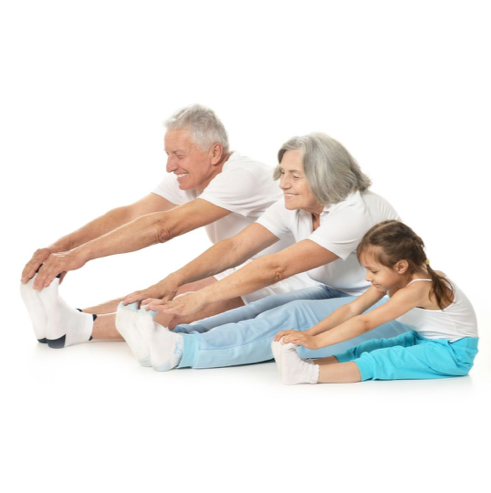Hello readers and welcome to October’s blog post! This month we are turning our focus to the elderly - an ever-growing population. Did you know that there are approximately 700 million people in the world aged 60 and over? And did you know that it is estimated that by 2050, there will be around 2 billion people on the planet that fall into this age bracket? That’s just over 30 years away! That’s quite difficult to comprehend, but with people beginning to work and live longer, it’s important that the elderly population get the attention and care they need to stay healthy and active; so they can enjoy the quality of life they deserve.
You might think that as people get older, they become less active and therefore are less likely to injure themselves. This may be true to a degree, especially once reaching retirement age, but the elderly population are generally an active population and are just as much at risk of injury as the next person. A 60-year-old person might not play footy or run around the basketball court as much as a teenager might, but they have other things to contend with - an ageing body with years of gradual degenerative change and weakening that we all experience at some point as we go through life. One of the most common causes of injury in the elderly is falling. Unfortunately, as the body ages, it becomes more prone to falls. This usually boils down to a combination of individual factors (i.e. having multiple diseases, poorer eyesight, or general weakening of the body) and environmental factors (e.g. trip hazards around the home setting). Some of the most commonly seen injuries sustained from falls include fractured hips, arms and forearms, cuts and lacerations, as well as head injuries.
In a clinical setting, us osteos see our fair share of older patients. It’s less likely we’ll see someone in the acute setting immediately following a trauma like a cut, laceration or in many instances where a fracture is suspected, but it does happen. It is much more likely however, that we will see patients experiencing pain related to postural strain (think about the retiree who sits around a lot), or from degenerative changes in the body. A common degenerative condition affecting the elderly population is osteoarthritis (OA). This most commonly affects the joints in the hips, knees and spine - particularly those of the neck and lower back. It’s no coincidence that these are the main weight-bearing joints of the body.
So what is OA?
OA is a condition affecting the synovial joints in the body (the joints between two bones in the body that have a lubricating fluid between them). It is characterised by changes to the cartilage and underlying bone, as well as inflammation and irritation to the soft tissues that help to hold the joints together - known as the synovium - it’s the tissue that forms the lubricating fluid that sits between the joints.
Primary OA refers to changes in the joints that relate to the ageing process. It will often run in the family, so if your granny or dad has it, you may be more at risk to develop it. Secondary OA is arthritic change from any other cause. For example, following on from trauma, repetitive stress, poor posture, or from diseases such as gout.
Signs & symptoms
The main symptoms (things the person experiences) of OA include pain, stiffness, poor joint function and muscle weakness. Signs (things we look for in the clinical setting) that a joint is degenerated include popping and clicking, poor range of motion, bone and joint swelling, deformity and instability.
What to do if you have or think you have OA
First things first, book an appointment to see your local osteo. After questions and assessment, we’ll get to work on your body and putting you on a pathway to moving better. There is a good chance your arthritic joint is paining you because you aren’t moving well, and the joint is being loaded incorrectly. The good news is, we know how you should be moving, and what needs to be done to get you there. We’ll aim to reduce your pain down by releasing tight and over-worked muscles and mobilising your stiff joints. Mobilising the joints helps to increase range of motion and will help promote production of the lubricating synovial fluid that sits between the joints to allow smooth fluid movement. You should get off the treatment table feeling less pain and moving better. There is a good chance you’ll need to do some form of strengthening to the surrounding weakened muscles, so the joint is more supported when you move it. More good news, we know which exercises will be beneficial to get you on the path to stronger muscles. Unfortunately, we cannot claim to cure your OA, but we can certainly get you moving with less pain or in an ideal situation, no pain at all.
What’s the outlook with OA?
More often than not, if caught early, significant changes can be made to stunt the progression of this degenerative condition. So, don’t ignore pain, it’s your body’s way of telling you something isn’t right. With early treatment, the best possible outcome will be achieved. If you pop into the clinic and we determine your issue is not OA-related, we can provide you with a sense of relief and get you on the right track for your situation (a positive outcome, either way!). In severe cases, you may require the opinion of a specialist orthopaedic surgeon. Sometimes people require joint replacements and can go on to live a very good quality of life with a new hip or knee for example. Always see your osteo first though. Using our skills, we can possibly keep you from having to go under the knife a bit longer, and maybe even at all. Worth a shot don’t you think?!

